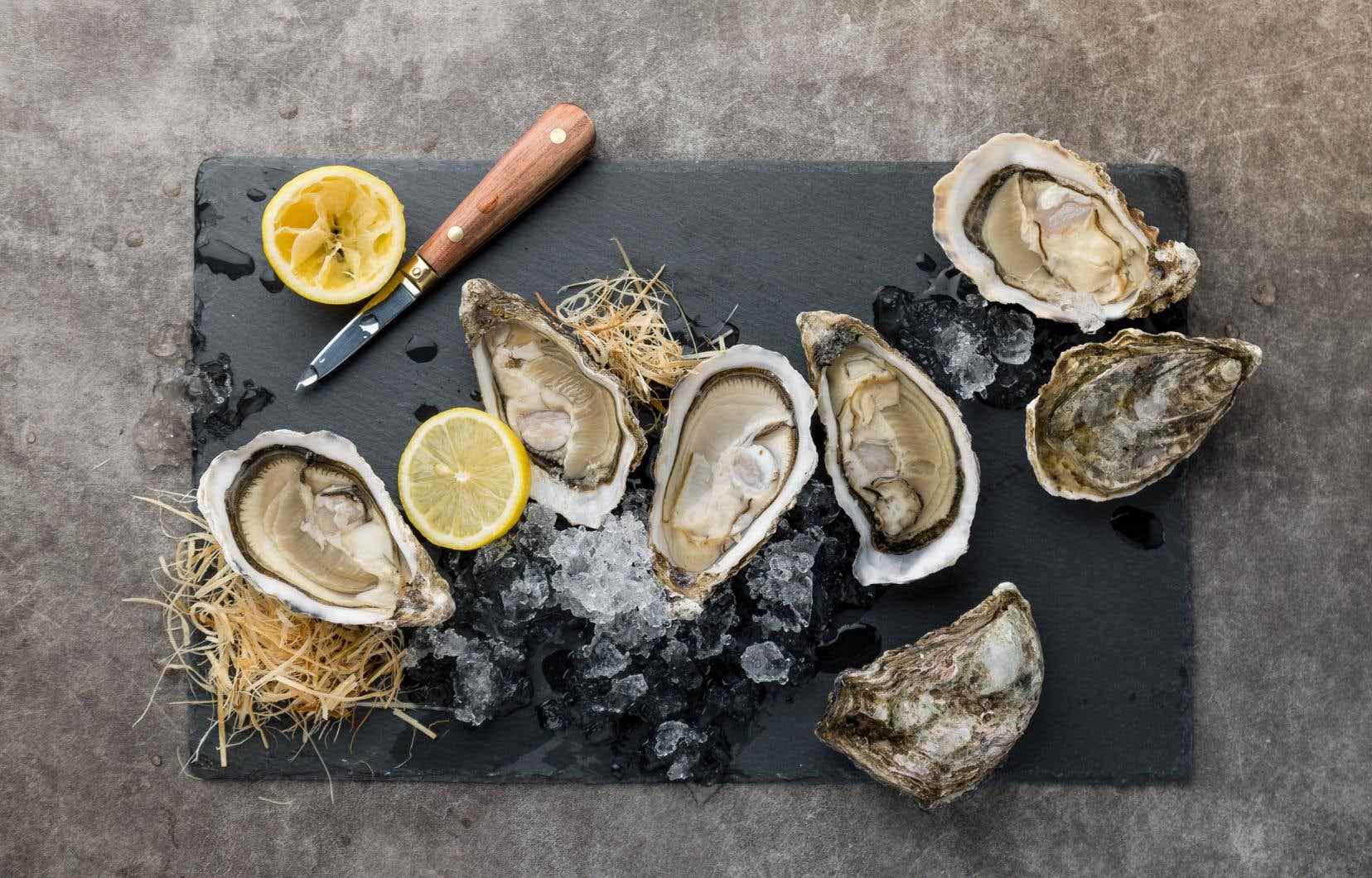This text is part of the special book Plaisirs
Leaving Montreal to settle in the Magdalen Islands is an ambitious project. Imagine if, in addition, it is to start his own oyster farm… at the age of 25. Here is the story of Alexandre Brazeau, founder and director of operations of the oyster farm Huîtres Old Harry, in Grosse-Île.
How did a young finance graduate from Concordia University’s John Molson School of Business come to quit everything to start growing shellfish on the other side of the province? First, out of interest in the food industry: “Working in the restaurant business, I discovered a real passion for oysters, especially among young people,” says Alexandre Brazeau.
Then, it was the environmental aspect of oyster production that won him over. Learning about the mollusk, he realized that in addition to being delicious and nutritious, it was essential to maintaining a clean marine ecosystem. Indeed, an oyster filters and cleans the water by feeding on algae and plankton, thus improving the quality of the water in which it lives.
Alexandre Brazeau was now convinced: he was going to become an oyster farmer.
In April 2018, he founded his company with two partners, who have now jumped ship. At the same time, he won the OSEntreprendre provincial challenge and charmed the jury with his project combining “a lifestyle, a passion and a vision of the world”. The following year, he obtained the honorary scholarship from the Ministry of Economy and Innovation aimed at encouraging young people to embark on entrepreneurship.
The Old Harry oyster
“Oysters, because they have been overfished in the Maritimes, have great difficulty reproducing naturally in our waters,” says Alexandre Brazeau, who has learned a lot about what is produced in Quebec.
According to him, a 100% local oyster would ideally be a mollusk whose spawning and growth would take place in Quebec waters. Currently owning the only grow-out farm in Quebec, Alexandre has no choice but to order spat (oyster larvae) from hatcheries in the Maritimes and then grow them in his waters.
Other producers usually buy oysters that have already been around for a few years to complete their growth in their body of water. In this sense, they are not totally Quebecois.
“It takes a long time to start an oyster farm,” admits the young entrepreneur. It takes several permits, including those from the Quebec Ministry of Agriculture, Fisheries and Food and Fisheries and Oceans Canada, among others, before you can start creating your aquaculture site. »
Then you have to choose your location. Water temperature and ambient climate are the most determining factors in choosing a site for establishing an oyster farm, especially if you want to reproduce it. “Almost all the producers here use the same variety, the Virginia oyster. It’s the body of water in which it grows as well as the plankton it eats that will give it its distinct taste,” explains Alexandre Brazeau.
Fresh and distinct mineral taste
Old Harry Bay, in Grosse-Île, in the northern Magdalen Islands, was therefore strategically chosen for its nutrient-rich salt water and its location sheltered from high winds, thus protecting the equipment. “A bit of fresh water pours into the bay, and that’s what gives my oysters a very fresh and distinct mineral taste,” he adds.
He then cultivates them in suspension, in floating cages located on the surface of the water and constantly shaken by the winds and tides. Results ? Molluscs with more generous flesh than those cultured on the bottom, thanks to an abundant supply of food and a strong adductor muscle, due to the constant tumbling.
As the oysters grow, they are sorted, cleaned, and then moved to larger mesh cages. We will repeat this process for three to four years, before we can put them on the market.
When will a 100% Quebec oyster be available? “In 2022, a first spawning in the natural environment took place. I am convinced that at the 2026 Holidays, I will be able to offer a first delivery of 100% local oysters,” says Alexandre, confident. In the meantime, it is possible to get Old Harry oysters in several grocery stores — Metro and IGA, in particular — in season.
The months in “ber”, or the oyster season
This special content was produced by the Special Publications team of the To have to, pertaining to marketing. The drafting of To have to did not take part.
